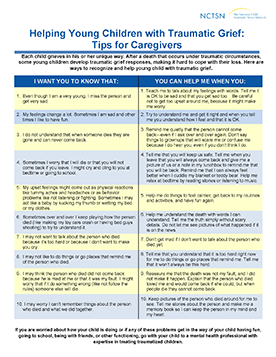
Helping Young Children with Traumatic Grief: Tips for Caregivers
Outlines the feelings of young children struggling with the death of someone meaningful and offers suggestions on what caregivers can do to help.
The following resources on child trauma were developed by the NCTSN. To find a specific topic or resource, enter keywords in the search box, or filter by resource type, trauma type, language, or audience.

Outlines the feelings of young children struggling with the death of someone meaningful and offers suggestions on what caregivers can do to help.
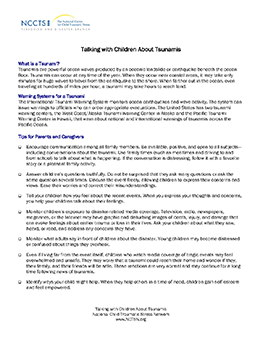
Provides information on how to talk to children about tsunamis. This tip sheet describes what a tsunami is, how warning systems for tsunamis work, and tips for parents and caregivers on how to talk to children about tsunamis.
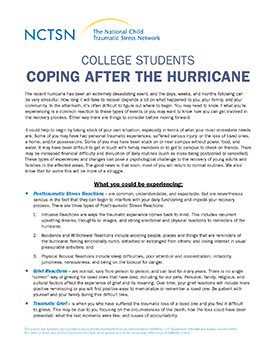
Supports students who are recovering from a hurricane. This fact sheet describes common reactions students may experience, suggests ways to enhance their capacity for coping, and gives a checklist of specific strategies students can use in the aftermath of the disaster.
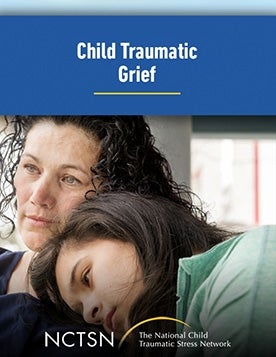
Addresses the importance of understanding child traumatic grief and loss.
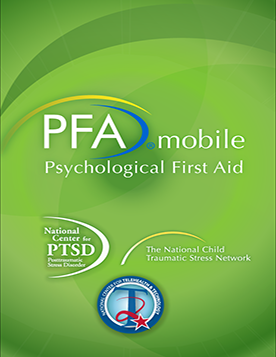
Lets responders review PFA guidelines and assess their readiness to deliver PFA in the field.
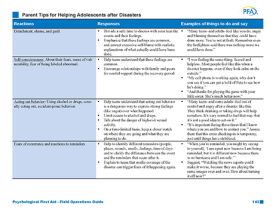
Is a handout from Psychological First Aid Field Operations Guide (PFA). This handout provides parents with common reactions after a disaster, ways to respond to those reactions, and examples of things you can say to your adolescent.

Is a handout from Psychological First Aid Field Operations Guide (PFA). This handout provides parents with common reactions after a disaster, ways to respond to those reactions, and examples of things you can say to your infants or toddlers.
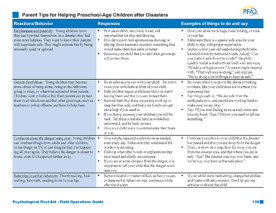
Is a handout from Psychological First Aid Field Operations Guide (PFA). This handout provides parents with common reactions after a disaster, ways to respond to those reactions, and examples of things you can say to your preschool-age child.
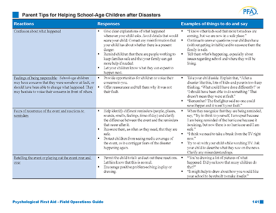
Is a handout from Psychological First Aid Field Operations Guide (PFA). This handout provides parents with common reactions after a disaster, ways to respond to those reactions, and examples of things you can say to your school-age child.
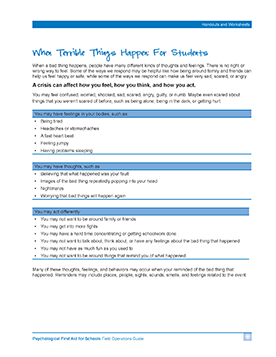
Is a handout from Psychological First Aid for Schools (PFA-S) Field Operations Guide. This handout offers information on immediate reactions that may occur, common negative reactions that may continue, reactions to the death of a loved one, ways to cope, and strategies that don't work.
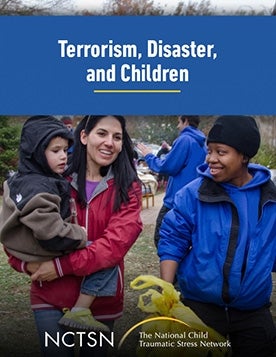
Examines the evolution of post-disaster interventions since 9/11.
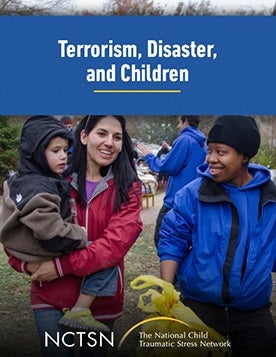
Describes how best to prepare our children for emergencies. This webinar discusses how to prepare for events from a community preparedness and resilience standpoint, as well as emergency preparedness within school settings.